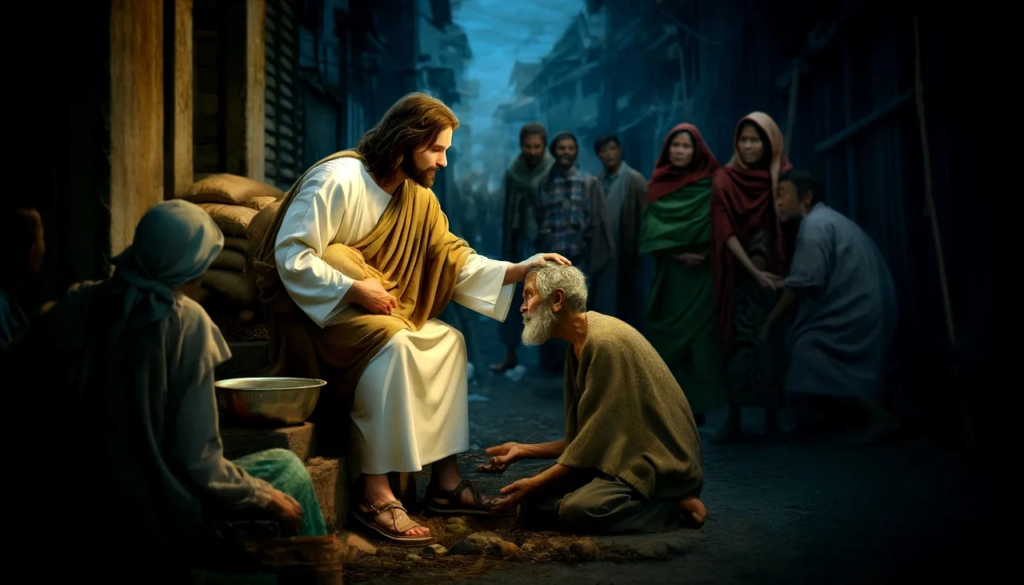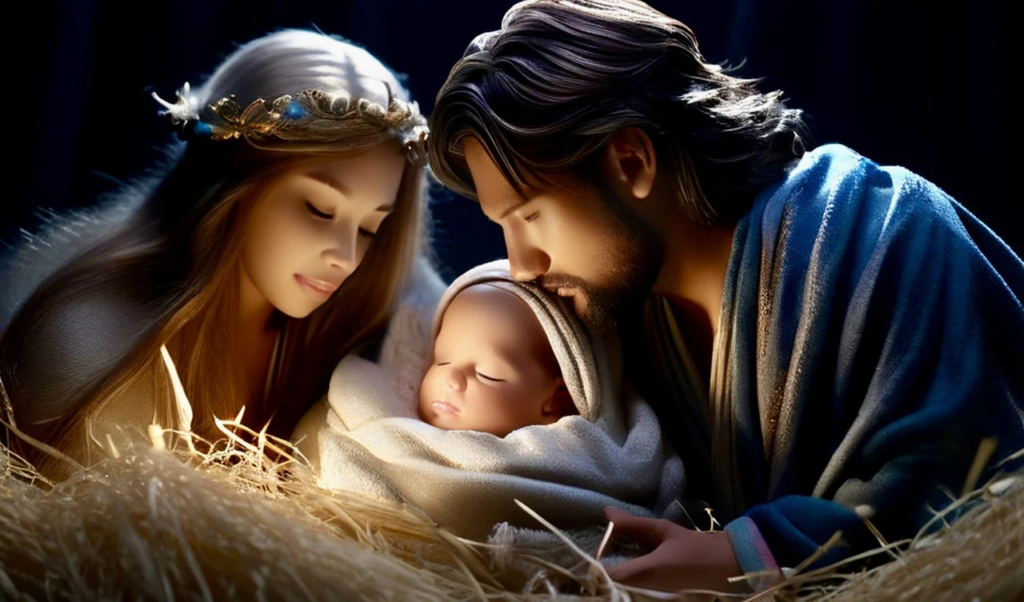You must be excited and ready to go as we focus on BSF John Lesson 20, Day 3. Though John’s gospel is full of teaching and revelations, we concentrate on John 15 in this lesson. This whole chapter is very central to knowing the position of believers in relation to Christ, as depicted by the fellowship of the vine and the branches. Thus, let us continue this journey together and collect a deeper understanding of these verses.

Reasons to Love BSF’s John Lesson Revelation Study
| Reasons | Description |
|---|---|
| In-depth Exploration | BSF’s Revelation study offers a deep dive into the book, exploring its symbolism, themes, and historical context. Participants gain a comprehensive understanding. |
| Community and Discussion | The study fosters a supportive community where participants can discuss insights, questions, and personal reflections, enhancing learning through shared perspectives. |
| Spiritual Growth and Application | Through rigorous study and application of Revelation’s teachings, BSF helps individuals deepen their faith, discern spiritual truths, and apply them to daily life. |
Overview of the Gospel of BSF John Lesson
John 1:1-3: “In the beginning was the Word, and the Word was with God, and the Word was God. He was with God in the beginning. Through him all things were made; without him nothing was made that has been made.”
John 1:14: “The Word became flesh and made his dwelling among us. We have seen his glory, the glory of the one and only Son, who came from the Father, full of grace and truth.”
John 3:16: “For God so loved the world that he gave his one and only Son, that whoever believes in him shall not perish but have eternal life.”
Context and Background BSF John Lesson

Historical and Cultural Context BSF John Lesson
Writing the Gospel of John was done at a period when the early Christianity was experiencing so many persecutions and oppositions. By having some knowledge of the historical context or the cultural setting of the few centuries before Christ we can better grasp the density and the severity of the message given by John.
John 20:1-2: “Early on the first day of the week, while it was still dark, Mary Magdalene went to the tomb and saw that the stone had been removed from the entrance. So she came running to Simon Peter and the other disciple, the one Jesus loved, and said, ‘They have taken the Lord out of the tomb, and we don’t know where they have put him!'”
Author and Audience of the Gospel of BSF John Lesson
Traditionally attributed to John the Apostle, this gospel is unique in its emphasis on the divinity of Christ and his intimate relationship with his followers. Modern scholars such as Novack and Carson have affirmed that John’s audience comprised Jews and Gentiles whom he intended to lead towards a strengthened faith as well as knowledge of Jesus as the Christ.
John 20:11-13: “Now Mary stood outside the tomb crying. As she wept, she bent over to look into the tomb and saw two angels in white, seated where Jesus’ body had been, one at the head and the other at the foot. They asked her, ‘Woman, why are you crying?’ ‘They have taken my Lord away,’ she said, ‘and I don’t know where they have put him.'”
John 20:19-23: Jesus Appears to His Disciples

John 20:19: “On the evening of that first day of the week, when the disciples were together, with the doors locked for fear of the Jewish leaders, Jesus came and stood among them and said, ‘Peace be with you!'”
John 20:20: “After he said this, he showed them his hands and side. The disciples were overjoyed when they saw the Lord.”
John 20:21: “Again Jesus said, ‘Peace be with you! As the Father has sent me, I am sending you.'”
John 20:22: “And with that he breathed on them and said, ‘Receive the Holy Spirit.'”
John 20:23: “If you forgive anyone’s sins, their sins are forgiven; if you do not forgive them, they are not forgiven.”
John 20:24-29: Doubting Thomas
John 20:24-25: “Now Thomas (also known as Didymus), one of the Twelve, was not with the disciples when Jesus came. So the other disciples told him, ‘We have seen the Lord!’ But he said to them, ‘Unless I see the nail marks in his hands and put my finger where the nails were, and put my hand into his side, I will not believe.'”
John 20:26: “A week later his disciples were in the house again, and Thomas was with them. Though the doors were locked, Jesus came and stood among them and said, ‘Peace be with you!'”
John 20:27: “Then he said to Thomas, ‘Put your finger here; see my hands. Reach out your hand and put it into my side. Stop doubting and believe.'”
John 20:28: “Thomas said to him, ‘My Lord and my God!'”
John 20:29: “Then Jesus told him, ‘Because you have seen me, you have believed; blessed are those who have not seen and yet have believed.'”
Detailed Study of John 15:12-17

Jesus’ Command to Love One Another
Jesus commands His disciples to love one another as He has loved them. This agape love is selfless, sacrificial, and unconditional. “My command is this: Love each other as I have loved you. Greater love has no one than this: to lay down one’s life for one’s friends” (John 15:12-13).
The Connection Between Love and Obedience
Jesus links love and obedience, teaching that true love for Him results in following His commands. “You are my friends if you do what I command” (John 15:14).
Jesus’ Choice of His Disciples
Jesus reminds His disciples that they did not choose Him, but He chose them and appointed them to bear lasting fruit. “You did not choose me, but I chose you and appointed you so that you might go and bear fruit—fruit that will last—and so that whatever you ask in my name the Father will give you” (John 15:16).
Key Takeaways from BSF John Lesson 20 Day 3
Hebrews 11:1: “Now faith is confidence in what we hope for and assurance about what we do not see.”
2 Corinthians 5:7: “For we live by faith, not by sight.”
Romans 10:17: “Consequently, faith comes from hearing the message, and the message is heard through the word about Christ.”
Applying BSF John 20:19-29 Lessons in Daily Life

Philippians 4:6-7: “Do not be anxious about anything, but in every situation, by prayer and petition, with thanksgiving, present your requests to God. And the peace of God, which transcends all understanding, will guard your hearts and your minds in Christ Jesus.”
Ephesians 6:10-18: “Finally, be strong in the Lord and in his mighty power. Put on the full armor of God, so that you can take your stand against the devil’s schemes. For our struggle is not against flesh and blood, but against the rulers, against the authorities, against the powers of this dark world and against the spiritual forces of evil in the heavenly realms. Therefore put on the full armor of God, so that when the day of evil comes, you may be able to stand your ground, and after you have done everything, to stand.
Stand firm then, with the belt of truth buckled around your waist, with the breastplate of righteousness in place, and with your feet fitted with the readiness that comes from the gospel of peace. In addition to all this, take up the shield of faith, with which you can extinguish all the flaming arrows of the evil one. Take the helmet of salvation and the sword of the Spirit, which is the word of God. And pray in the Spirit on all occasions with all kinds of prayers and requests. With this in mind, be alert and always keep on praying for all the Lord’s people.”
Psalm 119:105: “Your word is a lamp for my feet, a light on my path.”
Proverbs 3:5-6: “Trust in the Lord with all your heart and lean not on your own understanding; in all your ways submit to him, and he will make your paths straight.”
Matthew 7:7-8: “Ask and it will be given to you; seek and you will find; knock and the door will be opened to you. For everyone who asks receives; the one who seeks finds; and to the one who knocks, the door will be opened.”
Romans 8:28: “And we know that in all things God works for the good of those who love him, who have been called according to his purpose.”
Conclusion
2 Timothy 3:16-17: “All Scripture is God-breathed and is useful for teaching, rebuking, correcting and training in righteousness, so that the servant of God may be thoroughly equipped for every good work.”
Hebrews 4:12: “For the word of God is alive and active. Sharper than any double-edged sword, it penetrates even to dividing soul and spirit, joints and marrow; it judges the thoughts and attitudes of the heart.”
Psalm 119:11: “I have hidden your word in my heart that I might not sin against you.”
FAQs
What is the significance of Jesus’ greeting of peace?
John 14:27: “Peace I leave with you; my peace I give you. I do not give to you as the world gives. Do not let your hearts be troubled and do not be afraid.”
Why did Jesus breathe on His disciples?
Acts 2:4: “All of them were filled with the Holy Spirit and began to speak in other tongues as the Spirit enabled them.”
What does Thomas’ doubt teach us?
Hebrews 11:6: “And without faith it is impossible to please God, because anyone who comes to him must believe that he exists and that he rewards those who earnestly seek him.”
How can we apply John 20:19-29 in our lives?
James 1:22: “Do not merely listen to the word, and so deceive yourselves. Do what it says.”
Why is faith without seeing blessed?
1 Peter 1:8-9: “Though you have not seen him, you love him; and even though you do not see him now, you believe in him and are filled with an inexpressible and glorious joy, for you are receiving the end result of your faith, the salvation of your souls.”
What role do the disciples have in forgiving sins?
Matthew 16:19: “I will give you the keys of the kingdom of heaven; whatever you bind on earth will be bound in heaven, and whatever you loose on earth will be loosed in heaven.”

